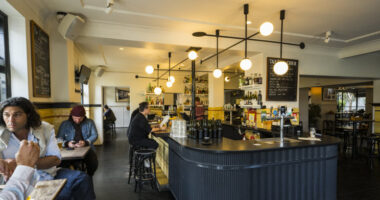Years ago, European wine was only taken seriously when it came from France, Italy or Spain – occasionally, America and Australia, but even those were a stretch – and English wine was at the very bottom rung of the ladder (not that there was much choice, mind). But now, thanks to a handful of pioneering English wineries and temperatures more conducive to perfect growing conditions, native grapes and the bottles they create are making even the most discerning of connoisseurs sit up and take notice. And it’s about time, too. Although Hambledon in Hampshire is the oldest commercial vineyard in England, founded in 1952 by Major-General Sir Guy Salisbury-Jones, it was Chapel Down – the Kentish winery that opened in 2002 – that first broke into the mainstream in a seriously big way, with others such as Bolney Wine Estate, Gusbourne Wine and Hattingley Valley Wines hot on its heels. Now, you’re spoilt for choice in the likes of Sussex, Kent and Hampshire with wineries peppering these beautiful counties. Simon Roberts, director of winemaking at Ridgeview – a winery in Sussex launched in 1995 – says: “It’s an exciting time to be part of the English wine industry. Figures from WineGB (our governing body) state there are now nearly 900 vineyards in England and Wales, which is three times the number compared to 20 years ago. At Ridgeview, we’re proud to be an integral part of the growth of our industry over the past 30 years.” The vinter has seen plenty of changes in this time, “the most significant being the effect of climate change over the last three decades. The 2018 season felt like a real change had begun, bringing a long, hot summer and a bumper harvest, which was our biggest to date before the record 2023. Ever since wine production has grown so much, and viticulture is now excitingly the fastest-growing sector in the agricultural industry.” Roberts explains: “Much of the success of the English wine industry stems from our blending of tradition and innovation with our feet both in the Old and New Worlds. Ridgeview has experienced exponential growth; production has increased from 25,000 bottles annually to over 500,000 with plans to reach three-quarters of a million a year.” He concludes: “Now, it’s not unusual to see English wines on restaurant wine lists. With English wines continuously winning international acclaim, there’s a real buzz and the quality keeps improving. We encourage customers and enthusiasts to support this growing industry and sustainability efforts by buying local and visiting vineyards. Not only do they provide an enjoyable day out, but you can see just how vibrant the English wine industry is.” Barbara Drew, Master of Wine and content officer at Berry Bros. & Rudd, the esteemed London wine merchant, chimes in: “For many years, English wine was something of a curiosity, but now the vineyards have matured, the vines are producing incredible fruit, and winemakers are much more confident in pushing the limits, knowing that their wines (certainly the fizz) can age for decades. As a result, these wines stand shoulder-to-shoulder with the best of France, or New Zealand or California. The sheer variety is also exciting. For a small island, we have a range of different climates. Yes, we can produce sparkling wine that rivals Champagne, but we can also create exquisite, buttery Chardonnays, juicy rosés, really floral white wines and smooth reds. I’ve even tasted some beautiful orange wines from England recently. For any fan of fine wine, English wine is, today, not to be ignored.” Still need convincing? Work your way through this list – they’re the best of the bunch.
Subscribe
Login
0 Comments





